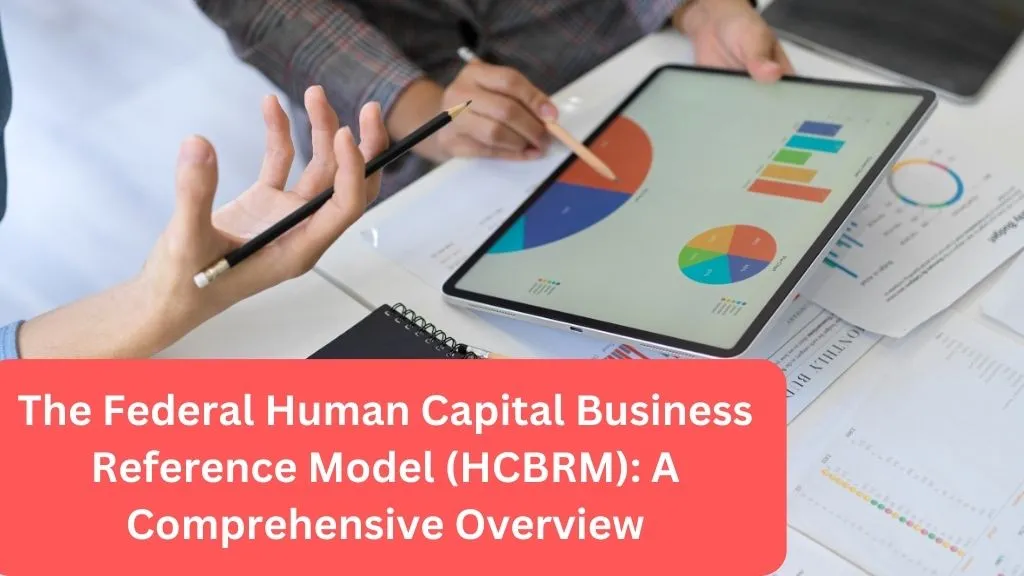The Federal Human Capital Business Reference Model:
In the dynamic realm of federal human resources management, the Federal Human Capital Business Reference Model (HCBRM) stands as a pivotal framework designed by the Office of Personnel Management (OPM). This model provides a comprehensive, end-to-end lifecycle view of Federal Government Human Capital Management (HCM), instrumental for agency Human Resources (HR) specialists in executing their roles effectively.
This article delves deep into the HCBRM, exploring its development, structure, functionalities, and its profound impact on federal human capital strategies and Human Resources Information Technology (HRIT) modernization planning.

Development and Purpose
The creation of the HCBRM was a collaborative effort, engaging HR policy experts and industry veterans through working groups and reviews. This strategic model serves multiple purposes:
- Uniform HR Model: It offers a standardized model for the HR user experience, ensuring consistency across federal agencies.
- Strategic Planning Foundation: Agencies leverage the HCBRM for developing their human capital strategies.
- HRIT Modernization: It underpins HR Information Technology modernization efforts, guiding the transition towards more efficient and effective HR systems.
Structure of the HCBRM
The HCBRM is meticulously structured, comprising 16 functions and 50 sub-functions, with 18 of these sub-functions encompassing the ’employee lifecycle’. This structure covers all statutorily required activities necessary for the government to establish and manage a world-class workforce. It includes:
- Functional Categorization and Definition: Clear categorization of HR functions and their definitions.
- Delegated Policy Oversight: Guidelines for policy oversight in HR management.
- Legal and Regulatory Compliance: Addresses the legal and regulatory framework surrounding HR management in the federal sector.
Core Functionalities and Benefits
The HCBRM is designed to offer a plethora of benefits to federal agencies and their HR departments:
- Simplified Stakeholder Information: It provides stakeholders with a simplified view of HR operational functions and policy ownership.
- Quick Reference for HR Practitioners: HR practitioners benefit from a quick reference guide to understand main functional requirements in their specific HR areas.
- Strategic Planning for Agency Leadership: Enables agency leadership to more effectively plan for, deliver, assess, and manage HR workforce, policy, processes, budget, and service delivery.
- Streamlining of Government-wide HR Operations: Outlines the process for significant HR operations, including acquisition, budget formulation, programmatic evaluation, shared services, and data management.
Implementation and Adoption
For effective implementation, the HCBRM supports federal agencies and partners by offering:
- People Management: Assessing, aligning, and staffing HR workforce readiness based on agency-specific HC functions.
- Policy Evaluation: Evaluating existing policy structures to ensure they meet all requirements of the agency-specific HC functions.
- Process Improvement: Aligning and improving processes and procedures for agency-specific HC functions.
- HRIT and Service Delivery: Modernizing HRIT and shared services to support all HC functions.
- Data Categorization and Reporting: Establishing a common alignment of HR operational, contract, and budget data through the HCBRM coding taxonomy.
Human Capital Federal Integrated Business Framework (HC-FIBF) Adoption
The HCBRM is further enhanced by the HC-FIBF, which includes baseline government-wide HC service standards for all HC functions, developed in collaboration with various federal entities. This framework comprises:
- Business Lifecycles and Capabilities: Outlining the outcome-based business needs with mapped federal government authoritative references and standards.
- Business Use Cases and Data Elements: Documenting key activities and identifying minimum data fields required to support these activities.
- Service Measures: Defining how the government measures successful delivery of outcomes based on timeliness, efficiency, and accuracy targets.
Conclusion
The Federal Human Capital Business Reference Model is a cornerstone for transforming federal human resources management. By providing a clear, transparent, and comprehensive framework, the HCBRM empowers federal agencies to align their human capital functions with strategic objectives, modernize HRIT systems, and enhance overall HR service delivery. As federal agencies continue to adopt and integrate the HCBRM into their HR operations, the promise of a more efficient, effective, and unified federal workforce becomes increasingly attainable.
VISIT USAOFFBEAT HOMEPAGE FOR LATEST INFORMATION